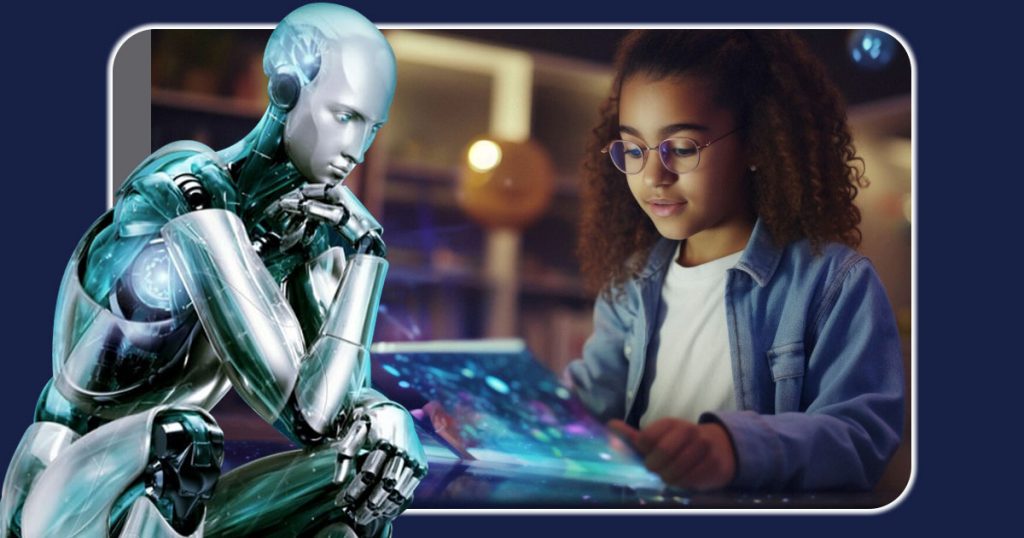As promising as AI is, it also presents challenges, especially in education. While AI can make learning more personalized and help schools run more smoothly, it’s not all good news. Many students now use AI tools to quickly complete assignments, which raises questions about honesty in education.
How Students Are Using AI in Education
Students today are using artificial intelligence in many ways to help with their studies. This includes apps that help them learn, chatbots that answer questions, and writing tools that help them draft essays. For example, imagine a student named Alex who has a history paper to write. Instead of researching and writing it themselves, Alex uses an AI tool to create the essay quickly. The AI uses prompts Alex gives it to generate a complete essay, which Alex can submit with little effort.
Is It a Problem for Students to Use AI?
While AI can be helpful, using it too much can cause problems. Here are some concerns:
- Loss of Thinking Skills: If students use AI to do their work for them, they might not learn how to think critically or solve problems on their own. This can stop them from forming their own ideas.
- Cheating Concerns: AI makes it easy to create work that looks like the student’s own, which can lead to cheating. This puts fairness and honesty in school at risk.
- Shallow Learning: Relying on AI for quick answers can mean students don’t really learn the material deeply. This might hurt their understanding in the long run.
- Over-Reliance on Technology: If students use AI too much, they might become dependent on it and not develop skills to study independently.
- Stress and Anxiety: The pressure to use AI to get good grades can make students stressed, especially if they feel they can’t keep up without it.
These issues show why it’s important to use AI wisely in education, making sure it supports learning rather than taking it over.
The Broader Impact of AI on the Educational System
AI isn’t just changing how students learn; it’s also affecting the whole education system, bringing several challenges.
- Over-Reliance on AI by Teachers: Teachers might start depending too much on AI for tasks like grading and giving feedback. This can reduce their interaction with students, which is important for learning.
- Lower Quality of Education: While AI can handle some classroom tasks, it can’t replace the human touch that teachers provide. If schools rely too much on AI, they might ignore the unique needs of each student.
- Privacy and Ethical Issues: AI collects a lot of student data, which raises concerns about privacy. If this information isn’t protected well, it could lead to trust issues with schools.
- Less Creativity and Critical Thinking: AI often focuses on efficiency and standard answers, which can lead to less emphasis on creativity and critical thinking in schools.
- Educational Inequality: Not all schools have access to the same AI tools. This can widen the gap between schools that are well-funded and those that aren’t, leading to unequal learning opportunities.
These challenges show why it’s important to use AI carefully in education, making sure it helps rather than harms the learning experience.
How AI Should Be Used in Education
Schools should set clear rules about how AI is used in classrooms. This means deciding when it’s okay to use AI, making sure it complements traditional teaching methods, and not letting it take over the learning process. Teachers and students should understand how AI works, what it can do, and how to use it safely, especially when it comes to protecting privacy.
Governments need to step in with laws that protect student data and regulate how AI is used in schools. Regular checks on AI tools can ensure they meet safety and privacy standards. AI can also be a huge help to teachers by taking over administrative tasks like grading and organizing schedules, allowing them more time to focus on what really matters—working closely with students.
To make sure AI benefits all students, schools should work on providing equal access to AI tools. This means helping schools that don’t have a lot of resources get the technology and training they need. Finally, schools should encourage creativity and critical thinking, using AI as a tool to gather information while making sure students come up with their own ideas and solutions.
Keeping a Balance Between AI and Human Thinking in Schools
AI is becoming a big part of education, but it’s important to remember that it should help, not replace, the special thinking skills students need to learn. AI can make learning more exciting, but it shouldn’t take the place of the critical and creative thinking that good education builds.
Teachers have a key job in keeping this balance. If students use AI, educators should teach them how to use it wisely. This means showing students how AI can help them learn better while making sure they also think independently and add their own ideas. Teachers should discuss using AI ethically and help students think critically about the information AI gives them.
Teachers can ensure that AI complements human intelligence by integrating it into lessons while still focusing on creativity and critical thinking. This approach prepares students for a world full of technology. The future of education with AI is bright, as long as we keep focusing on the creativity and critical thinking that make learning powerful.

